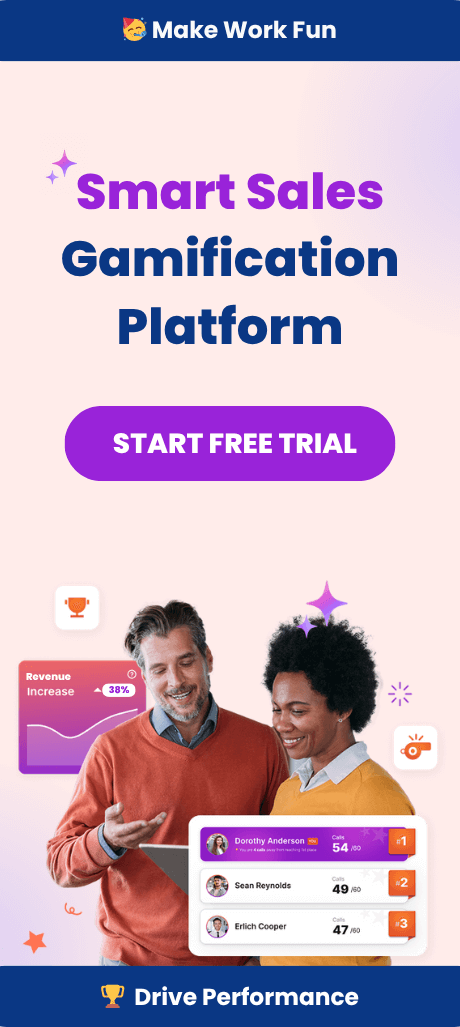Digital Leaderboards Fuel High-Performance Teams
Modern sales and service organizations face a dilemma: how to drive high performance, collaboration, and motivation across distributed, multi-generational teams using methods that resonate in today’s data-driven workplace. The answer, increasingly, lies in digital leaderboards — a blend of transparency, competition, and recognition that has quietly become the linchpin of many high-performing cultures.
The Evolving Role of Leaderboards in Modern Teams
Leaderboards have long been a visible marker of status and accomplishment in sales floors, but the digital transformation of the workplace has expanded their scope and impact. Rather than relying on whiteboards or monthly memos, digital leaderboards now bring a cloud-based, real-time dimension to goal tracking and performance management. This shift is not simply technological, but cultural: it changes how performance is communicated, how competition is framed, and how teams rally around shared benchmarks.
The why behind this evolution is straightforward. Today’s executives recognize that sales KPIs and performance goals lose their potency if they are hidden in spreadsheets or revealed only in quarterly reviews. Digital leaderboards provide ongoing visibility, surfacing not only top performers but also emerging trends across teams. In an era where agility and accountability are non-negotiable, these platforms offer a shared language of achievement that enables teams to course-correct in real time rather than playing catch-up at quarter’s end.
Building Trust Through Transparent Metrics
Transparency is a fundamental driver of engagement and trust in the workplace. When sales metrics, conversion rates, and deal pipelines are visible to all, accountability is democratized: achievements are celebrated, gaps are addressed openly, and the entire team can learn from both successes and obstacles. Digital leaderboards allow executives to communicate expectations and recognize progress in a way that is both timely and inclusive. The data-driven nature of these tools mitigates bias, anchoring performance reviews and coaching in observable outcomes rather than subjective impressions.
This transparency has a positive effect on company culture. Teams that know how their efforts stack up against collective goals are more likely to collaborate, share best practices, and support underperforming colleagues. It also fosters a spirit of healthy competition that pushes everyone to bring their best to the table.
Why Digital Leaderboards Outperform Traditional Methods
Digitizing leaderboards is not just about speed or convenience — it’s about driving better outcomes. Traditional methods, like manual tracking or one-off recognition emails, are invariably prone to error, inconsistency, and lack of engagement over time. Digital platforms, on the other hand, offer several distinct advantages:
- Automated data integration from CRMs and other business systems ensures accuracy and up-to-date standings.
- Real-time updates eliminate the lag between achievement and recognition, a powerful motivator for high performers.
- Customizable views enable executives to tailor displays for different teams, objectives, or even individual preferences.
The cumulative effect is a system that scales with growth, adapts to changing strategies, and keeps everyone focused on what matters now, not what mattered last month.
The Psychological Impact: Motivation, Recognition, and Belonging
Executive leaders often ask why digital leaderboards succeed where pay raises or quarterly awards do not. The answer lies in human psychology. The immediacy and public nature of praise matters. Seeing one’s name rising on a leaderboard — especially against clear, objective criteria — taps into both intrinsic motivation (personal growth, pride) and extrinsic drivers (rewards, status). This is particularly true when leaderboards are linked to personalized goals and non-monetary rewards such as badges, public shoutouts, or unique opportunities for professional development.
Research shows that frequent, visible recognition builds a sense of belonging and commitment to the organization. This effect is multiplied when teams can track not just individual progress, but the aggregate performance of their group against wider benchmarks — a feature central to modern digital leaderboard platforms. The result: more proactive engagement, lower attrition rates, and a culture where continuous improvement is the norm.
Enabling Continuous Coaching and Data-Driven Insights
Leaderboards have also changed the coaching dynamic. Rather than periodic, backward-looking meetings, sales managers can use real-time stats from leaderboards to offer timely, targeted guidance. If a rep’s pipeline velocity slows or conversion rates dip, managers can intervene within days, not weeks. The result is a development process that feels less punitive and more collaborative.
- Coaching becomes data-driven, reducing the impact of recency bias and memory gaps.
- Metrics-based feedback builds credibility with analytical team members.
- Management can quickly identify coaching opportunities at both the team and individual level.
Moreover, this data-centric approach aligns with broader trends towards analytics in sales coaching, making the entire process more measurable and accountable.
Customizable Leaderboards: No Longer One Size Fits All
One vector of change in leaderboard technology is customization. Today’s sales teams are rarely homogenous, and “top-line revenue” is no longer the sole (or even always the best) yardstick. Customizable leaderboards allow leaders to set different KPIs for different roles, products, or market segments, ensuring that recognition reflects what matters most to the business now.
For example, a team launching a new product might focus leaderboard rankings on number of demos or early customer feedback, while another team prioritizes multi-quarter retention. The flexibility to combine quantitative (deals closed) and qualitative (client satisfaction) measures ensures that everyone has a relevant stake in the leaderboard’s meaning.
This shift has implications for inclusivity as well. Employees of varying strengths, whether they excel in closing, relationship-building, or pipeline generation, are all able to find recognition. Platforms that support customizable leaderboards, such as those detailed in this exploration of customizable leaderboards, can profoundly broaden the definition of success.
Integrating Gamification for Deeper Engagement
While digital leaderboards offer structure and transparency, gamification injects energy and emotional engagement. Gamification elements — like points, levels, and challenges — have been lauded for their impact on behavior and motivation in sales for years. The combination of leaderboards with thoughtfully designed game mechanics transforms everyday work into a series of meaningful milestones, sparking excitement even in routine tasks.
- Micro-rewards destigmatize failure, making it easier to experiment and take calculated risks.
- Tiered challenges maintain enthusiasm throughout long sales cycles.
- Social recognition, such as digital badges or team shoutouts, builds community and shared purpose.
Organizations deploying strategic gamification in sales consistently see gains in engagement and performance — a pattern that intensifies when paired with transparent, digital leaderboards.
Real-World ROI: Data-Backed Benefits of Leaderboards and Gamification
Quantifying the impact of digital leaderboards is critical for executive buy-in. Organizations that employ real-time, team-based leaderboards in combination with gamification report measurable outcomes in several areas:
- Higher quota attainment: Teams with live leaderboard visibility regularly exceed sales goals compared to those without public standings.
- Reduced rep churn: Transparent metrics and frequent recognition contribute to stronger retention rates, especially in competitive verticals.
- Improved onboarding speed: New hires are ramped up faster when expectations and pathways to recognition are clearly archived and made visible from day one.
Corroborating studies have been published regarding both the efficacy of gamification software and the broader importance of performance transparency across industries.
Implementation Pitfalls and How to Avoid Them
Although leaderboards can be transformative, they are not free from risk. Poorly designed systems can foster unproductive rivalry, undermine morale, or fail to capture the complexity of team contributions. It’s important for executives to anticipate these pitfalls:
First, leaderboards should always reinforce the organization’s values. For collaboration-based teams, over-rewarding individual performance may inadvertently suppress knowledge sharing. Secondly, metrics must stay tightly aligned to current business objectives — outdated or overly simplistic measures can quickly lose relevance. Finally, regular review and adjustment of leaderboard settings are necessary to maintain fairness and buy-in as strategies evolve.
Choosing a sales gamification platform with robust customization, analytics, and user feedback options will support organizations in navigating these challenges.
AI-Driven Leaderboards: The Next Stage of Engagement
An emerging frontier in leaderboard technology is artificial intelligence. AI is making it possible to generate predictive insights, personalize recognition, and even recommend coaching interventions in response to real-time data. These advances enable a new level of nuance in leaderboard rankings — dynamically weighting achievements by changing business priorities, employee preferences, or seasonality.
For example, AI-powered sales gamification can identify patterns in rep performance and suggest timely stretch goals or mini-challenges that will be most motivating for each individual. The technology also anticipates slumps and spikes, alerting managers proactively, rather than only after the fact. Organizations exploring AI’s emerging impact on sales gamification are already piloting features such as adaptive targets and automated rewards distribution.
Digital Leaderboards and Hybrid Work
Remote and hybrid work environments amplify the benefits of digital leaderboards. Team members working from different locations require centralized, accessible systems to stay connected and aligned. Leaderboards, available via mobile and web, give everyone equal visibility into team progress regardless of geography or work schedule. As organizations discover, asynchronous access to recognition and progress updates contributes to a sense of inclusion and motivation for remote talent. Teams are kept together by a shared awareness of goals and results, rather than relying on physical presence or watercooler updates.
The Strategic Value for Executive Leaders
For executives, the return on investment in digital leaderboards extends beyond high scores or public celebrations. The strategic value lies in how these platforms promote alignment, reinforce core behaviors, and accelerate cultural transformation. By making performance visible and actionable, executives create self-correcting teams that are both agile and resilient. The data generated by these platforms fuels not just coaching and incentives, but strategic planning itself: recalibrating goals, staffing, and investments in near real time.
Leaders seeking to drive real performance gains should remember that the impact of leaderboards is not static, but multiplies over time as teams internalize the rhythms of visible recognition and goal tracking. With every iteration, transparency strengthens, engagement deepens, and results improve.
Evaluating Digital Leaderboard Solutions
With a growing landscape of options, from basic CRM add-ons to comprehensive sales gamification suites, evaluation criteria should focus on business fit rather than bells and whistles. Key factors for executives to consider include:
- Integration: Seamless data flow from existing systems (CRM, support desks, BI tools).
- Customization: Ability to tailor KPIs, display rules, and competitive mechanics to unique business needs.
- Analytics: Reporting and insights that go beyond surface-level stats to explain performance drivers and gaps.
- User experience: Intuitive, accessible interfaces for rapid adoption across all user profiles.
Demoing top-ranked platforms or launching a trial, such as those available through Spinify, can give teams firsthand experience with these features, supporting informed selection and smooth rollout.
Moving Forward: Action Steps for Executives
The digital leaderboard is no longer just a motivational sideshow. It is a core element of the future-ready workplace — one that meets the demand for clarity, fairness, and inspiration in equal measure. For executives preparing to implement or upgrade their leaderboard strategy, key action steps include:
- Define clear business objectives and map KPIs accordingly.
- Choose a flexible, data-rich platform that will support ongoing evolution.
- Integrate recognition and coaching opportunities into daily routines.
- Solicit regular feedback from all stakeholders to fine-tune approaches.
By prioritizing transparency, inclusivity, and engagement, leaders can transform not just performance metrics, but the lived experience of work for every team member. Digital leaderboards are the catalyst — it is up to organizations to seize the opportunity and lead from the front.



